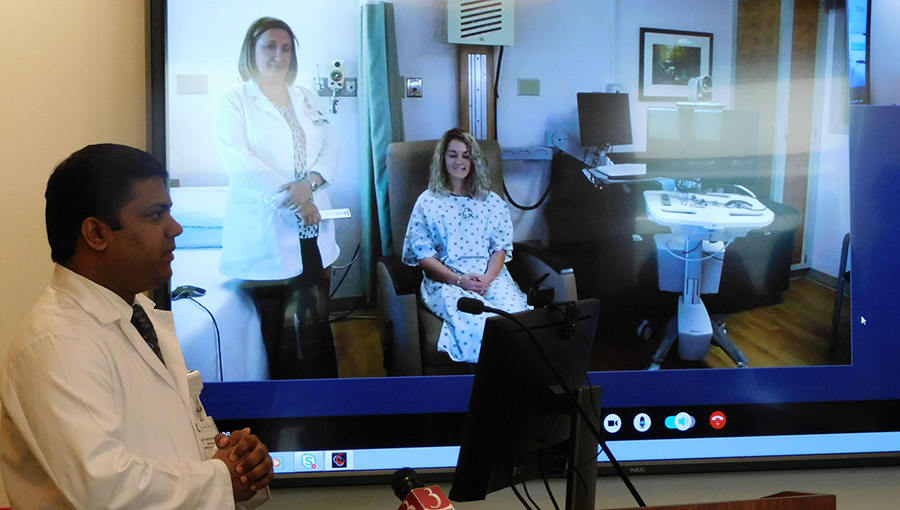If a woman in a small U.S. town such as Lubbock, Texas wants to have an abortion, she’ll need to travel 308 miles to Fort Worth to have it done, because that’s where the nearest clinic is located. This will force her to take time off from work, pay for travel, and likely arrange childcare to get there. But, what if she could video chat with a doctor, pick up a prescription from her regular pharmacy, and manage her own abortion with on-call medical support – a telemedicine abortion?
Wired discusses how telemedicine could fill the gaps in abortion care in the U.S.
Although similar services are being offered in a handful of US states, they still involve physical visits to an office.
The first US telemedicine abortion program began ten years ago, in Iowa. Four Planned Parenthood clinics used telemedicine to perform 8,765 abortions between 2008 and 2015. All of them followed the same protocol: A patient would enter the clinic for an appointment, including an ultrasound, and a doctor would review her report and medical history – remotely. After talking to the patient via videoconference, the doctor would enter a password which would unlock a drawer in front of the patient. Inside, there were 2 pills: The first, mifepristone, the patient took with the doctor still watching; the second, misoprostol, she took at home. Within two weeks, the patient returned to the clinic for a follow-up to ensure the abortion was complete.
A study on nearly 20,000 patients from the Iowa program showed that telemedicine abortion was just as safe and effective as meeting with a doctor face to face.
In a sense, telemedicine abortion is simply the safe, regulated version of the internet’s existing medication black market. “Many folks are going online and figuring out how to do abortions on their own,” says Leah Coplon, program director at Maine Family Planning.
A 2017 Gynuity Health Projects study showed that buyers in four states were able to purchase abortion pills online without a prescription. A recent study published in the journal Perspectives on Sexual and Reproductive Health found that while obstacles to clinic access were a common reason people sought medications for abortion online, some respondents said they explicitly preferred doing their own abortions at home.
But the sites that sell the pills do not usually provide reliable information on how to take them safely and effectively. “[Telemedicine abortion] is the way that we can offer it to them that’s legal, safe, and supportive,” says Coplon. “They can reach nurses or doctors at any time if they need support.”
Patients in rural areas would be especially benefitted by telemedicine abortions. But, that does not mean they’ll solve all the problems with abortion access: Medication abortion is only FDA-approved up 10 weeks gestation, and some candidates for the procedure still prefer an in-clinic abortion.
“Some people, due to the barriers they face in getting to the clinic, can only make it in once, and they need to walk out knowing they’re not pregnant,” says Coplon.
Without the restrictions, the process could be even more self-determined. The process is working in other parts of the world. Ushma Upadhyay, associate professor at University of California San Francisco and a researcher with UCSF’s Advancing New Standards in Reproductive Health program, notes that in Ireland, a recent study showed that a telemedicine model requiring no clinic visits was safe and effective.
Coplon said for many patients, the ability to choose when and where to have their abortion would be a great change. “I think we need to look into anything that increases access by meeting people where they are—literally,” he said.













